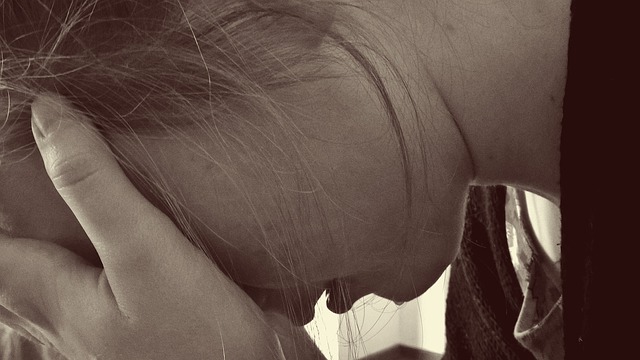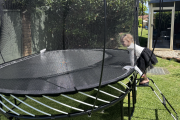A Parents Guide to Managing Online Bullying

Dr Melanie Turner is a child and adolescent psychiatrist who works in Norwood South Australia. She is the director of her practice MyChild Psychiatry and Psychology, is a senior clinical lecturer at The University of Adelaide, works with the Royal Australian and New Zealand College of Psychiatry in training and assessing our future psychiatrists and completed her PhD at the University of Adelaide in 2015. She is passionate about family and child mental health, building strong foundations for adulthood and recognising the needs of children for a loving, accepting and patient world.
Managing Online Bullying
In 1993 I was in year 12, I didn’t have a mobile phone and was excited that I had a computer with a dot matrix printer. The internet was a new and scary thing and getting access to it reliably was a challenge. How times have changed. In the mobile consumer survey in 2017 there were over 88% of our population with a smart phone; 35% of consumers check our phone within 5 minutes of waking and 70% use it during dinner time with family and friends.
Sensis social media report tells us that 8 in 10 Australians are on social media, for teens that is almost 100% in 2018. Online bullying is more and more common with children and teens often receiving unwanted texts, criticisms, name calling and suggestions that they should hurt or kill themselves. Like physical bullying it is a significant problem, the ongoing degradation of our sense of who we are can be very painful and lonely, particularly when we are young.
Why do they do it?
Online bullying, unlike other bullying, allows people to be anonymous. Anonymity means that the associated guilt, shame or distress at behaviour is much less. Essentially it can be done without you having to wear the responsibility of what you did and often you are not ‘found out’. When we are not face to face, we do not have to see and feel the responses of others, we can avoid that experience and then don’t learn from it. This gives bullies a sense of power – acting without consequence, and they will often repeat this to increase their power. The more people bully the more likely they are to break other social rules and be in more trouble at school and at times with police.
Who does it?
What we do know is that children of any age who have access to the internet are a potential bully and bully victim. Often groups of kids will form friendships at school, and with the immediacy of online communication they will often message each other very soon after getting home. The drive to be a part of the group means that they are fearful of missing out on posts and updates, they will check their text/social media a lot, and often will participate in conversations, good or bad, so that they are not ‘out of the group’. Bullying can be a part of ‘solidarity’ to remove someone from a group. It is often a response to a disagreement or friendships change, and often a small comment becomes quickly magnified in a world where we don’t really filter what we say. What seemed to be innocent comments or photos can be sent out of context, copied over and over and before we know it a rumour and comment about us has grown to a large size.
How to spot online bullying for your child?
- If your child is checking their phone more than often and more secretively
- If they are upset with their usual group of friends and have lost face to face contact with them
- If they begin to refuse to talk to or go to school with a person that they were often in contact with via phone/social media
- Shutting down or walking away from a computer in distress
- Lack of willingness to share what is happening on social media, with you or an adult.
- Anixety and waking at night to check social media or their phone.
- Don’t be afraid to ask – bullying can be embarrassing, lots of kids won’t say anything until you ask.
What to do?
Encourage your child to talk about what is happening with their friends
Ask to see what has been happening on social media/text etc
Take a snapshot of anything that is inappropriate
If the messages/photos are from school students then it is appropriate to talk to the school
For Anything that is a sexual or threatening the photo or text should be reported to the police.
Look through the ’friends’ list and ensure that those who are friends pass the test –
Have I met them?
Would I recognise them if they walked down the street?
If they were here would I enjoy their company?
Do they treat me well?
If they pass the 4 questions they are probably OK to keep on the list, the rest should go.
Help your child by reinforcing their good qualities
Your child is not to blame, help them see this and hold them tight while the bullies are being dealt with.
What next?
Block the numbers of those who were cyber bullying
Increase all of your child’s security so that they are not able to be easily found on the internet
Limit internet and social media use to 2 hours a day, so that there is a large portion of time where they have face to face contact, or voice contact with others.
Encourage socialising in person, to build stronger friendships.
Keep what is happening on their SM open, they can have privacy; but it is OK as a parent to want to know that the relationships are good ones.
If internet overuse is a problem, then using an app or software such as OurPAct can help you limit device use time and disable them when needed.
Model good friendships and device ‘down time’ with an obvious time of day where devices are put away and turned off.
References
https://www.sensis.com.au/asset/PDFdirectory/Sensis_Social_Media_Report_2017-Chapter-1.pdf
https://www2.deloitte.com/au/mobile-consumer-survey.html











